One & One Green Technologies stock soars 100% after IPO debut
Introduction & Market Context
BlackSky Technology Inc. (NYSE:BKSY) released its Q2 2025 earnings presentation on August 7, revealing mixed financial results as the company continues to invest in its next-generation satellite constellation. The space-based intelligence provider’s stock dropped 13.99% in premarket trading to $15.74, suggesting investors are concerned about the company’s widening losses despite improved liquidity.
The presentation highlighted BlackSky’s positioning in the growing global market for space-based intelligence, with particular emphasis on its Gen-3 satellite program and international expansion efforts. However, financial results showed slowing revenue growth compared to the robust 22% year-over-year increase reported in Q1.
Financial Performance
BlackSky reported first-half 2025 revenue of $51.7 million, representing a 5.2% increase over the prior-year period. This growth was primarily driven by the timing of professional and engineering service contracts, which grew to $16.9 million from $13.9 million in the first half of 2024.
As shown in the following revenue performance chart:
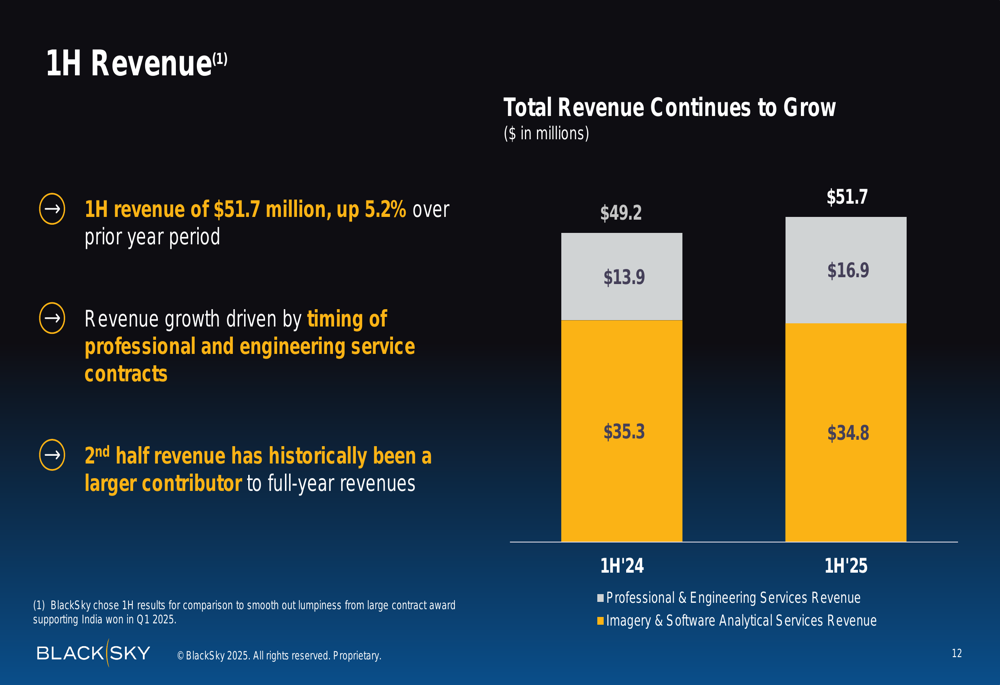
Notably, imagery and software analytical services revenue slightly decreased to $34.8 million from $35.3 million in the prior year period. The company maintained strong gross margins, with imagery and analytics gross margin reaching 81% in Q2, reflecting healthy economics from recurring imagery and analytics services.
Cost of sales saw a modest increase as the company made investments to optimize operating efficiencies:
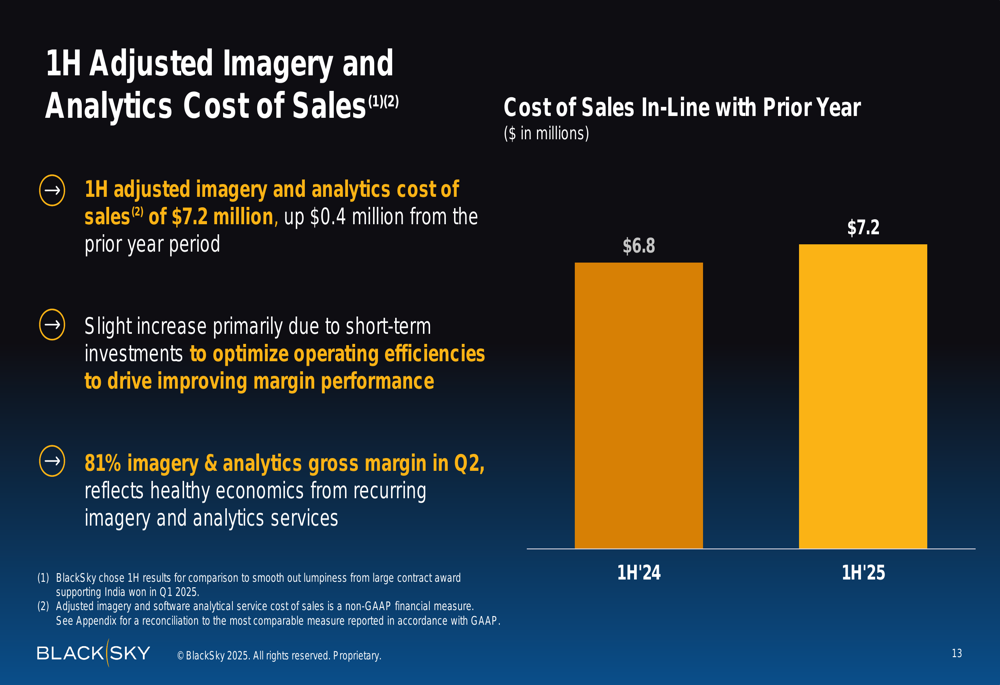
BlackSky’s adjusted EBITDA showed a significant shift from positive to negative territory. The company reported a first-half adjusted EBITDA loss of $3.4 million, compared to positive adjusted EBITDA of $3.5 million in the first half of 2024. Management attributed this decline partly to the strategic acquisition of LeoStella, noting that excluding LeoStella, the adjusted EBITDA loss would have been $2.2 million.
The following chart illustrates this EBITDA shift:
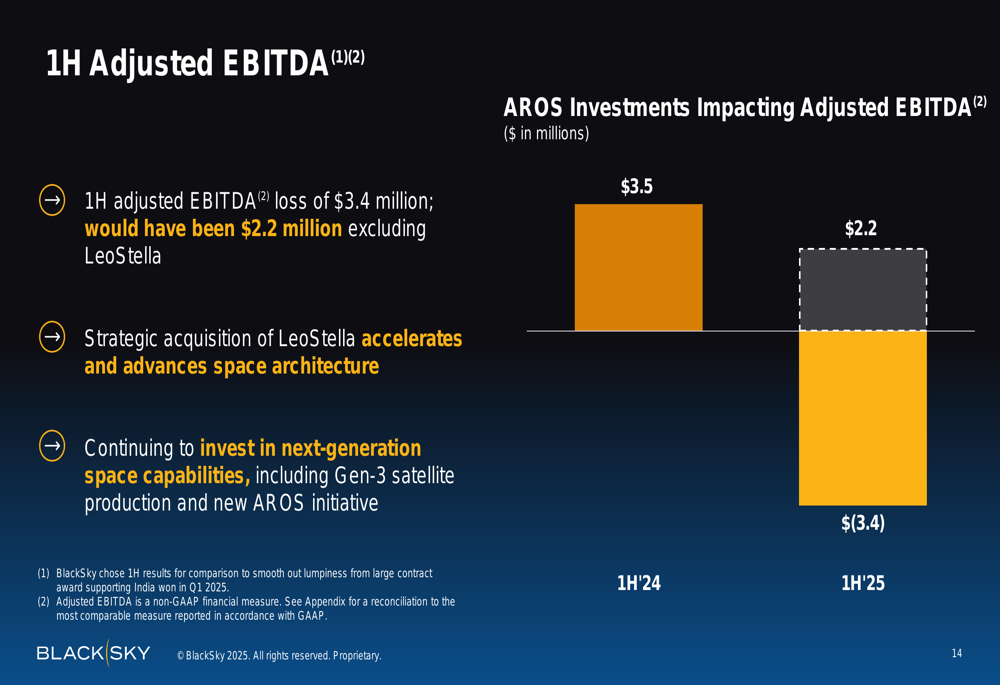
Despite operational challenges, BlackSky significantly strengthened its balance sheet. The company reported a Q2 cash balance of $94.9 million, up 124% over the prior year quarter, bolstered by $35.8 million in net proceeds from its at-the-market (ATM) equity program.
In July, BlackSky raised an additional $76.7 million of net cash, increasing its total liquidity position to over $227 million. This included $65.9 million net from a convertible debt offering and $10.8 million in warrant exercise payments.
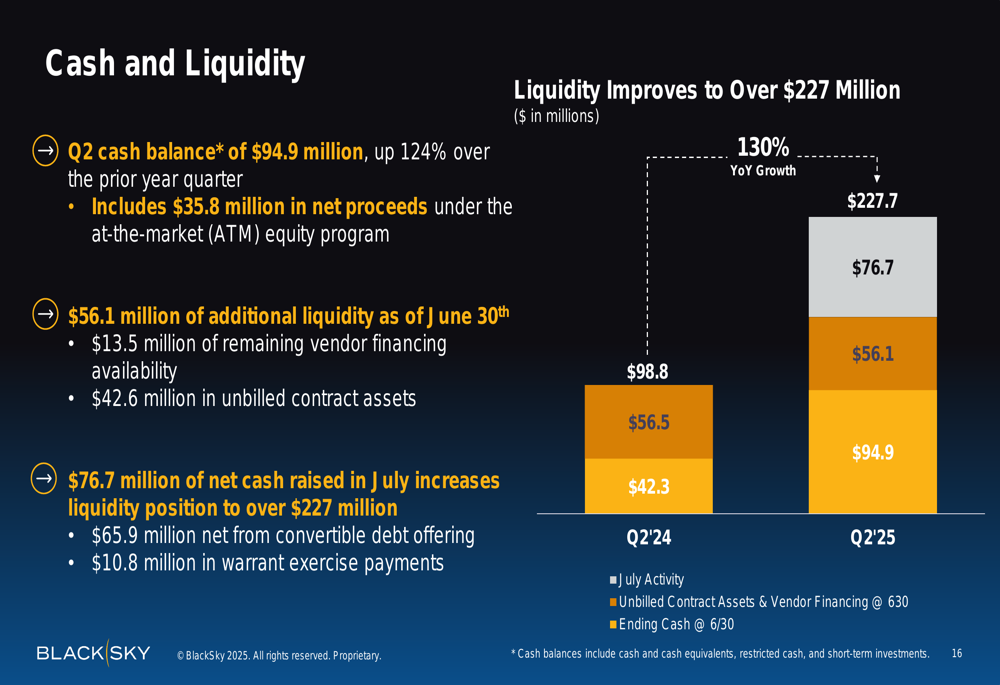
Operational Highlights
BlackSky secured several significant contracts during the quarter, including a facility monitoring delivery order valued at up to $24 million with the National Geospatial-Intelligence Agency (NGA) Luno A program. This contract leverages BlackSky’s real-time, AI-driven monitoring services for automated object and pattern-of-life change detection.
The company’s AI-powered monitoring capabilities are demonstrated in this image from the presentation:
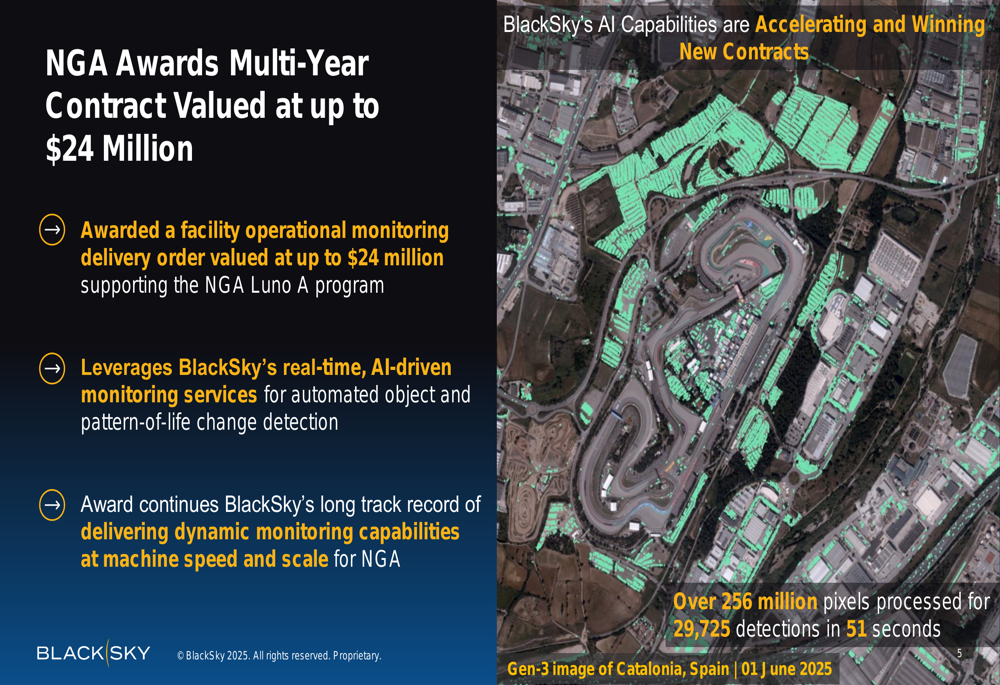
International expansion remained a key focus, with BlackSky signing early access agreements for Gen-3 services with multiple international defense customers. The company also secured new contracts in Latin America for both Gen-3 and Gen-2 monitoring and analytic services using its Spectra platform.
As shown in the following slide highlighting international growth:
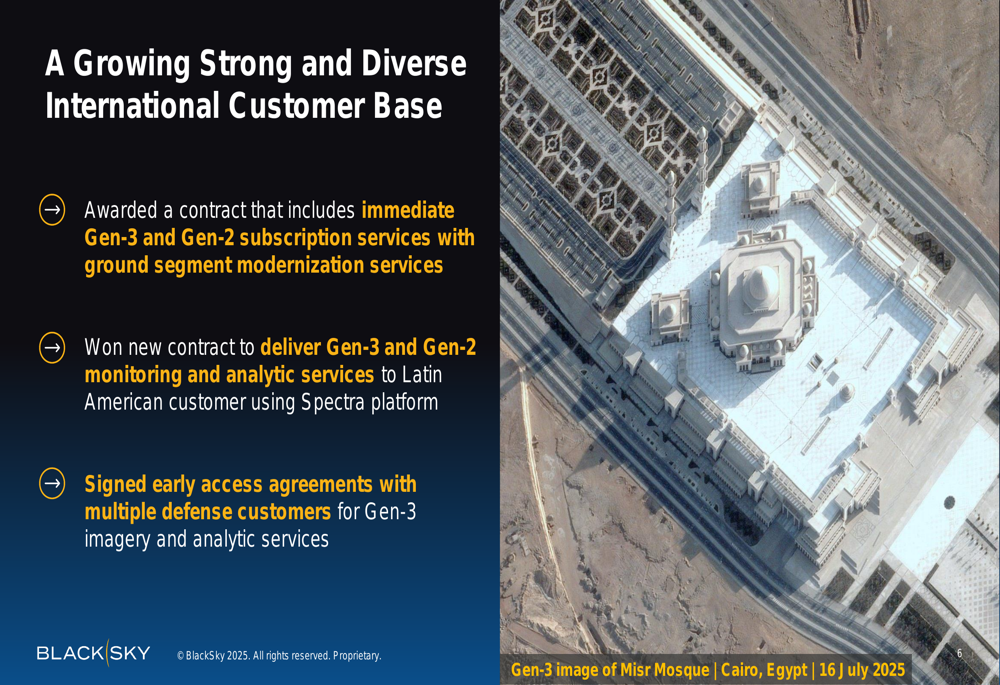
Strategic Initiatives
BlackSky’s presentation emphasized its continuing cadence of Gen-3 satellite launches. The company successfully launched and commissioned its second very-high resolution Gen-3 satellite during the quarter, with the third satellite in final testing phase and preparing for shipment.
Management confirmed they remain on track to launch six Gen-3 satellites this year and have eight on orbit by early 2026, with commercial availability of Gen-3 imagery services expected in Q4 2025.
The company also introduced its AROS (Area Reconnaissance Observation System) satellites, designed for cost-effective large area mapping, search, and change monitoring. These satellites are expected to fill an emerging capacity gap in the market and are slated for launch as early as 2027.
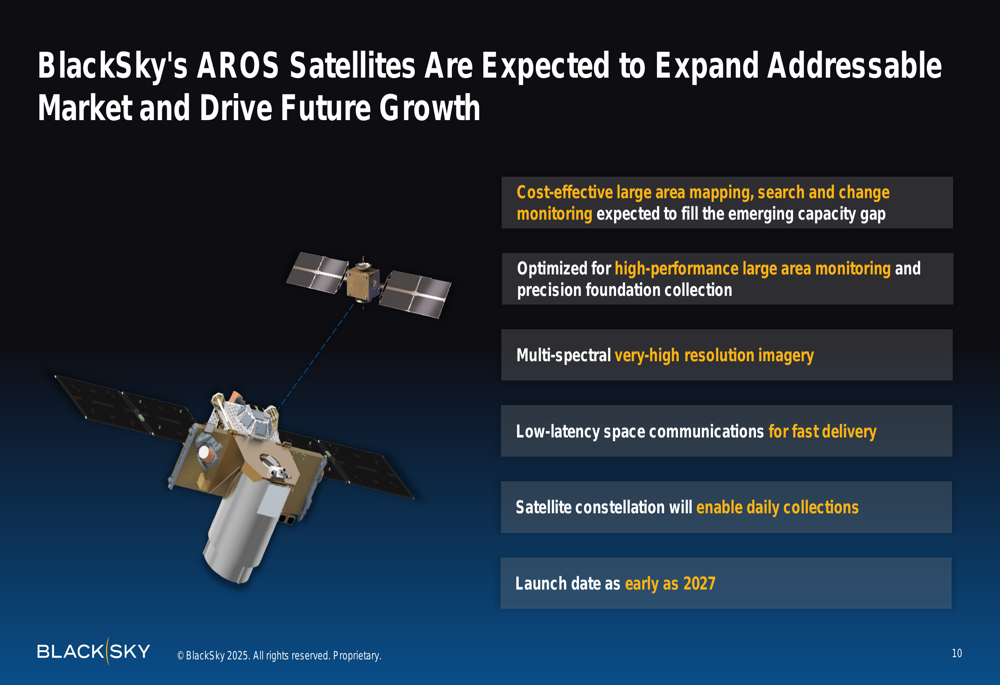
Another significant strategic move was the company’s $185 million convertible note offering, which not only strengthened BlackSky’s balance sheet but also improved its capital structure with new long-term investors. The proceeds were used to repay $103.1 million in senior secured notes and $10.2 million in commercial bank lines, with the remaining funds allocated to working capital, operating expenses, capital expenditures, and strategic investments.
Forward-Looking Statements
BlackSky maintained its 2025 outlook, projecting full-year revenue between $105 million and $130 million, adjusted EBITDA between $0 million and $10 million, and capital expenditures between $60 million and $70 million.
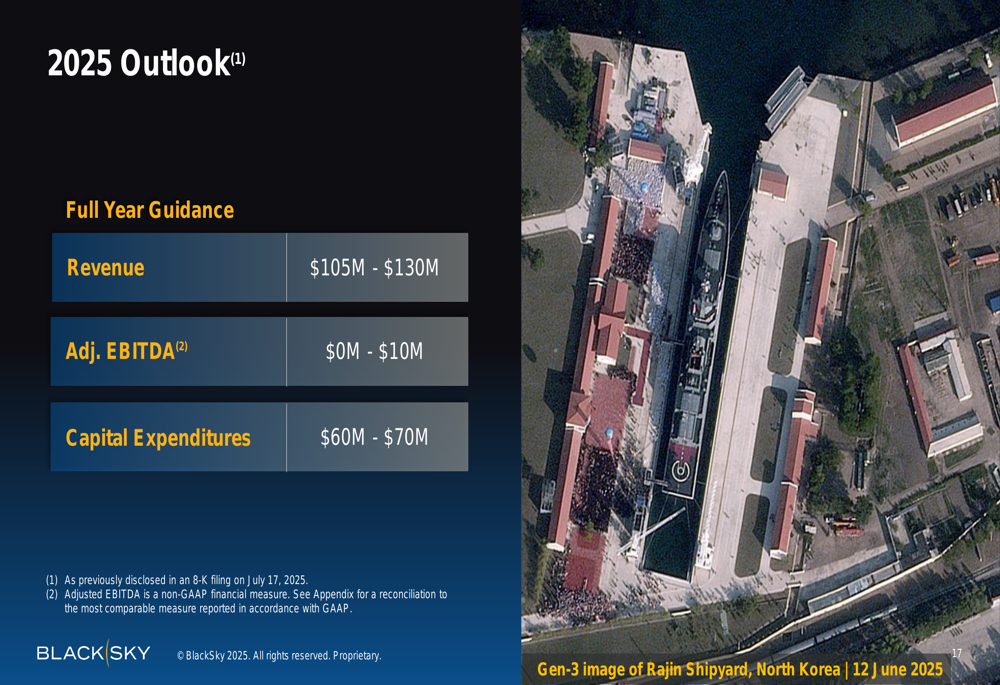
This guidance appears to represent a downward revision from the $125-$142 million revenue range mentioned in the company’s Q1 earnings report, potentially explaining some of the negative market reaction.
CEO Brian O’Toole had previously emphasized the company’s strategic positioning during the Q1 call, stating, "We are well positioned to capitalize on this dynamic in the market." The Q2 presentation continued this theme, highlighting BlackSky’s "exceptional performance from Gen-3 satellites fueling global customer expansion" and "multi-year contract wins and increased backlog driving long-term visibility and future growth opportunities."
However, the widening losses and apparent guidance reduction suggest the company faces near-term challenges as it continues to invest in its next-generation satellite constellation and AI capabilities. Investors appear to be weighing these short-term pressures against the potential long-term benefits of BlackSky’s strategic investments in advanced space technology.
Full presentation:
This article was generated with the support of AI and reviewed by an editor. For more information see our T&C.
